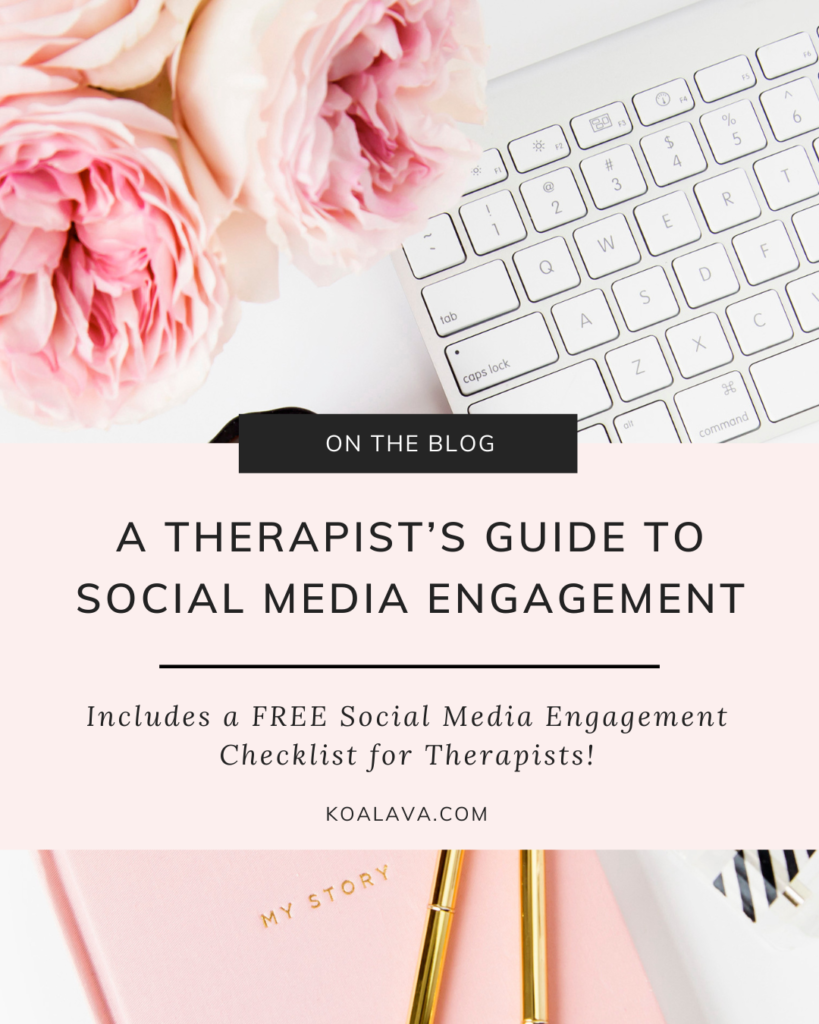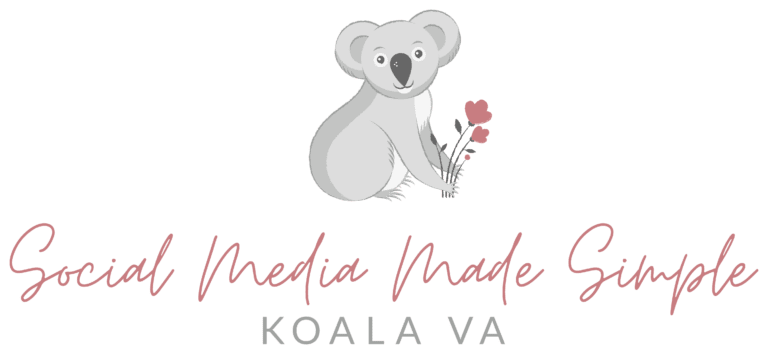You’ll have heard the term ‘engagement’ bandied around a lot in the world of social media, but have you ever stopped to think about what it really means and why you should do it? (And can you even do it ethically as a therapist?!)

To most people, social media engagement means just two things – likes and comments. That’s because those are the outward signs that people are responding to our content.
In fact, there are a whole host of other things that also count as engagement on – or as a result of – your posts, so make sure you take those into account too.
Other types of engagement include:
- Follows
- Direct messages (DMs)
- Post saves
- Post shares
- Profile views
- Website clicks
- Video views
Why is engagement so important on social media?
Engagement is the lifeblood of social media and without it, you’re just broadcasting.
Engagement helps you build a closer relationship with your followers. It allows you to get under their skin and understand what they want and need from you.
Engagement also sets you aside from other therapists who ignore their potential clients and gets you seen by more people. Best of all – the ‘algorithm’ loves engagement. In short, the more you engage, the more people will see your posts.
Proactive and reactive engagement
You’re probably familiar with the art of reactive engagement – that is, responding to comments and DMs sent to your accounts.
But how much time do you spend on proactive engagement?
Not sure what that is?
Proactive engagement is when you spend time actively engaging with other people’s content. This could include:
- Commenting on other people’s content
- Sharing other people’s posts to your stories
- Sending DMs or voice notes
- Starting or joining in with conversations on other accounts
- …the list goes on!
If you have a social media strategy, it should include a section on engagement.
If you don’t have a strategy or don’t currently bother with proactive engagement, I would urge you to factor it into your schedule. You’ll be amazed at the impact it can have.
Quick tips to increase your proactive and reactive engagement
Proactive Engagement
- Lots of platforms – including Instagram, Twitter and LinkedIn – have a bell on each user’s profile. When you click the bell, you’ll be notified each time that account posts. This is a great way to quickly engage with your favourite influencers, brands and ideal clients.
- When someone new follows your account, take a moment to check out their profile, like or comment on their most recent post and send them a personalised welcome message. You don’t need to go all out with a follow-back if you don’t think their content will add value to your feed.
- Follow strategic hashtags so that you can easily find and join conversations that are relevant to you – these could be industry or location-based.
![]()
Reactive Engagement
- Commit to responding to all comments on your posts (you can ignore the blatantly spammy ones) – or at least as many as you can if you get hundreds a day!
- Reply to all DMs – there’s nothing worse than a business that ghosts its potential clients (see “4 ways therapists can maintain their boundaries on social media” for info on how to do this in an ethical way as a therapist)
- Always include a call to action (CTA) on your post, e.g. ask a question or invite people to DM you for more info. People are much more likely to engage with your content when you give them a reason to.
Be consistent with your engagement
Being consistent with your engagement will make a huge difference to the success of your accounts, but I don’t want you to feel overwhelmed at the prospect.
The key is to be intentional and to make it part of your daily routine. Engage while you’re waiting for the kettle to boil or set a 10-minute timer and put your phone down when the alarm goes off.
Follow these simple tips and watch your account grow.
PLUS grab my FREE Social Media Engagement Checklist for Therapists so you know what you can do daily to grow your account through intentional engagement.
